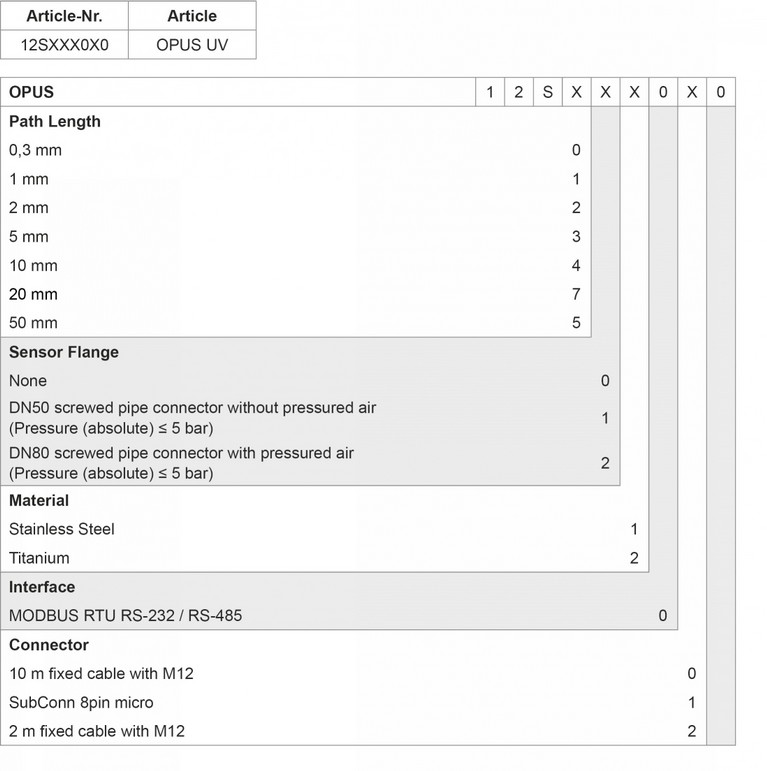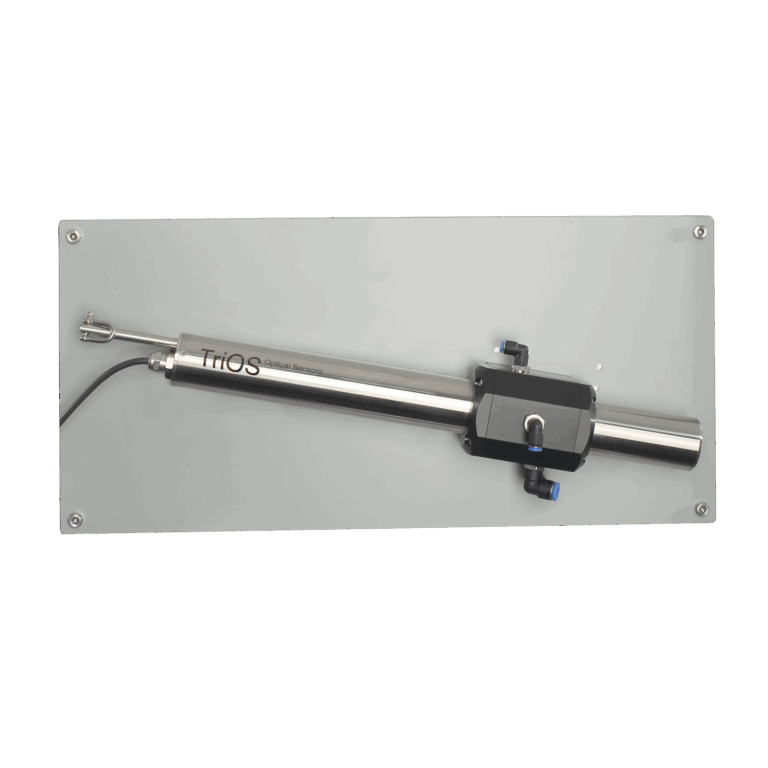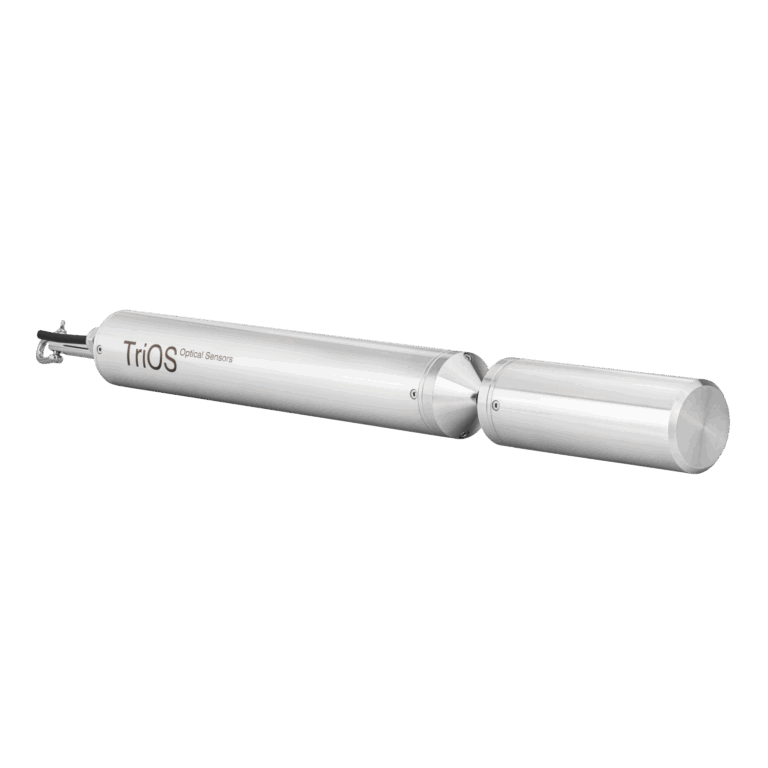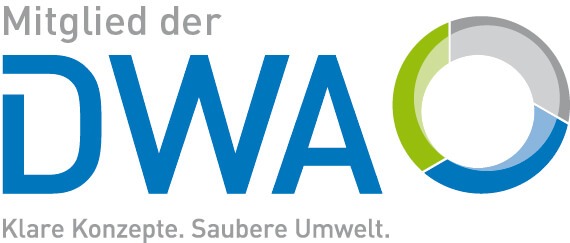OPUS
Description
Versions
Downloads
Description
UV spectral sensor for online measurement of nitrogen and carbon with a resolution of 0.8 nm/pixel.
OPUS is the new generation of spectral probes for the online measurement of nitrogen and carbon compounds. By analyzing a complete spectrum, OPUS is able to provide reliable readings for N-NO3, N-NO2, organic compounds (CODeq, BODeq, DOCeq, TOCeq) and a range of other parameters.
OPUS is equipped with the new TriOS G2 interface, which enables simple and fast sensor configuration using a web browser. Integration into existing process control systems and external data loggers has never been easier.
Using WLAN, a laptop, tablet or smartphone can then simply be used for control without the need to install special application software or an app.
Versions

Downloads
Benefits
- Without sampling and preparation of test samples
- Real-time sensor
- Without reagents
- Optical window with nano coating
- Pre-installed application calibration
Areas of application
- Sewage treatment plants
- Environmental monitoring
- Drinking water monitoring
- Industrial applications
Parameters
- NO3 / NO3-N
- NO2 / NO2-N
- CODeq
- BODeq
- DOCeq
- TOCeq
- TSSeq
- KHP
- SAC254
- CODeq- SACeq
- BODeq - SACeq




